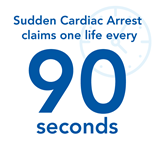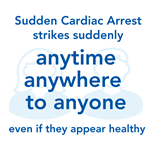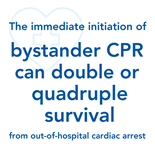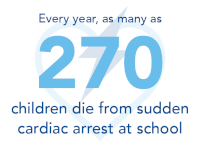Headlines
- Keeping Customers Covered: How Pharmacies can address the Summer Burn Surge - A clinical and practical guide for pharmacy teams
- Fleming Medical Achieves ISO 13485 Certification – Reinforcing Our Commitment to Patient Safety and Quality
- Gentle Daily Ear Care with Medicare Ear Spray
- Breathe Easy with Medicare Nasal Spray
- Fleming Medical Renews Support for Irish Heart Foundation’s “Before Damage is Done” Campaign with over €25K Donation
Why you Need an AED for your Community
05 July 2021

Sudden Cardiac Arrest (SCA) is something that can strike at any time, any place and to anyone, even if they appear healthy.
Sudden Cardiac Arrest (SCA)
SCA affects over 350,000 people in Europe each year which is why it is so important to have an AED (Automated External Defibrillator) in your local community. Ensuring that your local school, town hall, sports facility or park is equipped with an AED for such emergencies can save lives and provide peace of mind.SCA is when an electrical malfunction of the heart causes it to suddenly stop beating. This can happen within a spilt second and there are usually no warning signs. SCA is not a heart attack. A heart attack occurs when blood flow to the heart is impeded due to a blocked artery. Most heart attacks do not lead to cardiac arrest but when cardiac arrest occurs, heart attack is a common cause. Other conditions may also disrupt the heart’s rhythm and lead to cardiac arrest. Often associated with the heart, a stroke is a brain disorder.
Symptoms of SCA include collapsing, no pulse, and loss of consciousness and breathing. It can often be caused by having high blood pressure, obesity, smoking, high cholesterol levels, congenital heart disease and diabetes. Although these causes can contribute to SCA, it can affect children and adults of all ages and is not exclusive to those with a history of heart problems.
The Facts




To help a victim of cardiac arrest, CPR (cardiopulmonary resuscitation) must be carried out to restore blood flow to the brain and heart. An electrical shock must be administered from a defibrillator to stop erratic heartbeats and help restore the hearts natural rhythm. Quick thinking is vital, if effective bystander CPR is given immediately after cardiac arrest, the victim’s chance of survival is doubled. Only 5% of victims have a chance of surviving waiting for emergency services to arrive. If bystanders intervene and maintain CPR and use an AED machine, that chance of survival jumps to 60%.
Due to recent advances in technology, an AED is very easy to use, even for someone using it for the first time. A shock can only be administered if it is needed, and most AEDs prompt the user with each step and will wait until all steps are carried out before the electrical current is given.
Helpful Infographics
Check out our AED Infographic that explains why having an AED in your community is so important.

Worried about CPR during COVID-19? Have a look at our infographic that explains best practise CPR
AED Checklist
When you are choosing an AED for your company, organisation or community, it can seem like a daunting task. We have compiled a useful checklist of must-have features and aftercare that your AED should come with in order to get the best value and experience:- CPR Feedback: Most AEDs now guide the rescuer through the entire resuscitation process, they can also provide feedback on the quality of your CPR
- Electrodes: AEDs can come with electrodes pre-attached for faster application – also make sure to keep an eye on the expiry date of your electrodes, some AEDs automatically monitor this.
- Warranty: When you are purchasing your AED from a reputable supplier, you should have 5 years warranty at the very least
- Training & Aftercare: Your supplier should provide training on how to use the defibrillator as well as refresher training if needed. If your AED needs a service or technical support, they should be able to provide this to as a minimum requirement.
- Call-Out Support: Ensure there is a service in place to check the AED after it is used in an emergency.
For advice to help you choose the right AED to meet your needs, please contact our experienced staff today.

 Fleming Medical UK
Fleming Medical UK
